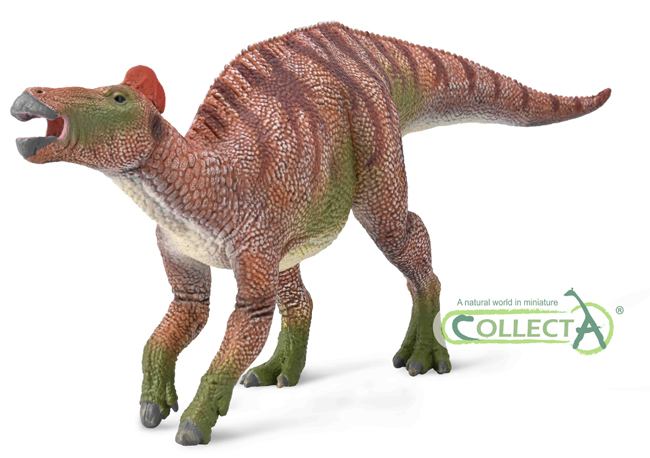Dinosaur Mummy Unlocks Duck-Billed Dinosaur Secrets
“Mummified Dinosaur – the Holy Grail of Palaeontology”
Dinosaur bones are rare, well preserved ones are exceptionally rare and for some palaeontologists the discovery of fossilised bones in association with each other or bones in articulation are the find of a life-time. However, for one young, American scientist, Tyler Lyson, his discovery of a remarkably well-preserved duck-billed dinosaur, complete with fossilised skin, ligaments and tendons is a discovery to beat most other discoveries.
Tyler, who is currently completing his Doctorate in Palaeontology at Yale University, found the amazing fossil whilst on a fossil hunting expedition in a remote part of North Dakota. The animal, a hadrosaur, when it died was buried very quickly by fine sediment and this has preserved parts of the soft body tissue, the dinosaur’s skin scales have even been preserved on parts of the skeleton.
This animal had no flamboyant head crest so it was probably a member of the hadrosaurine group, placing it in the same clade of dinosaurs as animals such as Edmontosaurus and Kritosaurus and dates from 67 million years ago, the Late Cretaceous (Maastrichtian faunal stage).
A Dinosaur Mummy
This find has been called a “Mummy” as like the Egyptian mummies soft tissue has been preserved, allowing scientists to shed new light on how these animals looked. Dr Phil Manning (Manchester University), the chief researcher on this specimen has supervised a CAT scan of this amazing fossil. CAT scans enable scientists to see inside fossils without intrusive and damaging extra preparatory work. The CAT scan was only possible due to the fact that the animal was able to be extracted from the site in one complete block of stone. Only a small part of the tail, was contained in a second block.
The CAT scan and other assessments have provided the researchers with a wealth of new material. For example, the vertebrae seem to be further apart in this specimen than previously thought. This may mean that scientists are going to have to amend their estimated sizes for this type of hadrosaur. They may actually have been bigger than we think. Animals such as Edmontosaurus have been estimated at lengths in excess of 13 metres, now this new find may lead to scientists having to revise these estimates.
A Typical Model of an Edmontosaurus

The new for 2022 CollectA Deluxe 1:40 scale Edmontosaurus dinosaur model. CollectA had wanted to introduce a replica of this iconic Late Cretaceous hadrosaur for some time.
The picture (above) shows a CollectA Deluxe 1:40 scale Edmontosaurus figure, to view this range of prehistoric animal models and figures: CollectA Deluxe Prehistoric Life.
CAT Scans
The CAT scan has also revealed that this hadrosaur had larger hind quarters than previously thought. The powerful back legs would have helped this animal take up a bipedal posture and run quicker than earlier studies had shown, perhaps helping to escape from predators such as Tyrannosaurus rex which were around in this part of Dakota 67 million years ago.
The picture shows some of the fossilised skin, the degree of preservation is remarkable.
Dark Stripes Along the Tail
According to Dr Manning, patterns identified in the skin scales indicate that this animal had stripes along its tail. It has been speculated that the strips were a form of camouflage to help this plant-eater blend into its surroundings. Stripes may have also served another purpose. In herd animals such as zebras, the strip pattern helps the animals merge into each other, preventing predators from singling out an individual. Palaeontologists believe that hadrosaurs lived in large herds, so perhaps the stripped pattern was designed to confuse potential attackers.
As with many special finds, this specimen has been given a nick-name by the research team, the dinosaur has been named “Dakota”, named after the US state where the fossil was found.
Other “mummified” dinosaur remains have been found, notably in the USA, Canada, Italy and China. What makes this specimen so rare is that the soft tissue has actually been preserved, other mummified fossils such as the beautifully preserved hadrosaur unearthed by Charles Sternberg in 1908 have the impression of soft tissue such as skin preserved as an impression in the surrounding rock matrix.

